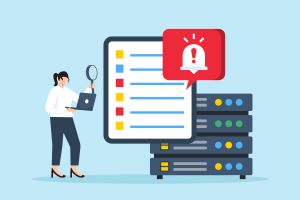In today’s digital landscape, threats don’t knock before entering. According to industry reports, cyber attackers can lurk inside networks for an average of 11 days before detection, often only surfacing when damage has already been done. These silent breaches underscore a critical truth: what you don’t know can hurt you.
Active Directory (AD) is a foundational component in most enterprise IT infrastructures. As Microsoft’s directory service platform, it underpins identity and access management in countless organizations, serving as the central hub for managing users, groups, resources, and policies. From on-premises environments to hybrid and cloud-integrated ecosystems, AD continues to be indispensable.
In today’s fast-paced digital landscape, artificial intelligence (AI) has become a crucial tool to support growth and innovation. It promises unparalleled efficiency and predictive insights, making it easier to outpace competitors. However, this potential comes with significant risks, especially when organizations are unprepared to address AI-specific cybersecurity challenges. Poorly implemented AI systems can expose sensitive data, increase vulnerabilities, and open new attack vectors for malicious actors. This article explores the critical intersection of AI adoption and cybersecurity readiness. From understanding AI-related cybersecurity risks to implementing practical frameworks and strategies, this guide provides actionable advice for ensuring your organization is AI-ready. By the end, you’ll have a clearer roadmap to integrate AI with security practices, letting you harness the power of AI while minimizing risks and maintaining a safe digital environment.
DevSecOps—short for development, security, and operations—is an application development practice that integrates security into every development lifecycle phase. It ensures software is built with security in mind, but it does not compromise on speed or agility. Unlike traditional DevOps, DevSecOps embeds security practices directly into workflows to seamlessly and proactively identify and mitigate vulnerabilities. By adopting DevSecOps principles and practices, businesses benefit from fewer vulnerabilities, faster deployments, and improved compliance. As AI and zero-trust architectures shape future trends, embracing the best practices of DevSecOps ensures resilient and secure pipelines, empowering organizations to deliver innovative and safe applications.
In today’s interconnected digital world, Distributed Denial-of-Service (DDoS) attacks are one of the most prevalent and disruptive cyber threats. These attacks flood websites, servers, or networks with overwhelming traffic, rendering them unavailable to legitimate users. Understanding the different types of DDoS attacks is essential for businesses, IT professionals, and individuals looking to safeguard their online presence. This article explores the common types of DDoS attacks, their impact on websites and services, and effective prevention strategies. With this knowledge, you can implement robust defenses to protect your digital assets and ensure uninterrupted operations in an increasingly hostile cyber environment.
In today’s interconnected digital landscape, applications are at the heart of business operations, powering everything from e-commerce to financial transactions. However, this increasing reliance on applications has also made them prime cyberattack targets. This is where application security comes into play. Organizations can safeguard their applications from breaches, data theft, and operational disruptions by implementing robust security measures






